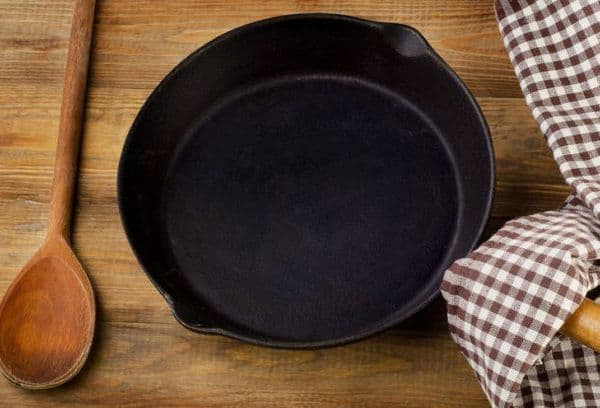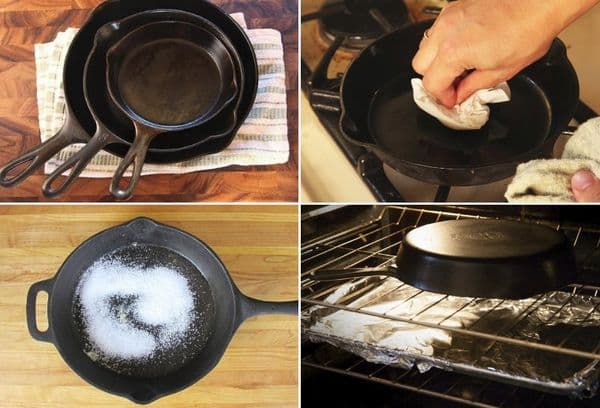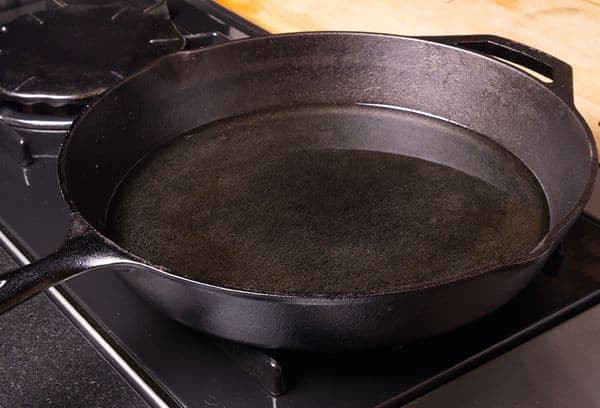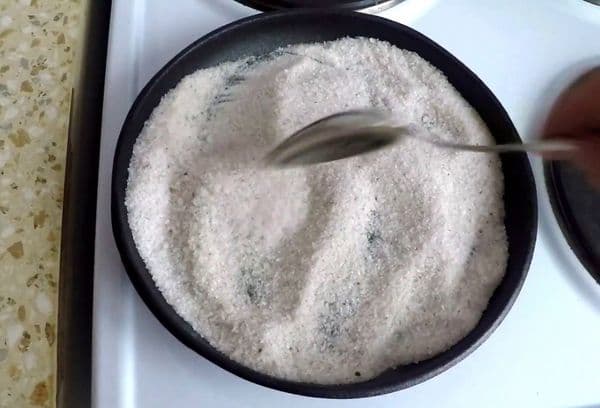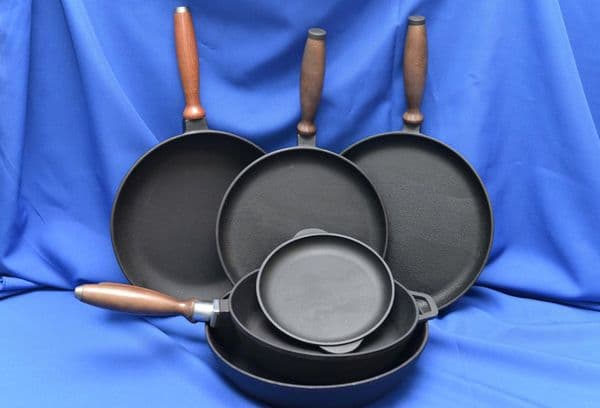How to prepare cast iron cookware: annealing and impregnation
Content:
A newly purchased, beautifully black cast-iron frying pan is not suitable for cooking. It must be washed thoroughly, and then calcined. How to handle the dishes correctly so that it does not rust and nothing burns on it? All you need is a stove, vegetable oil and a silicone brush.
Why you can not fry in a cast-iron pan immediately
The fact is that dishes come from the store in technical grease, which protects the cast iron from corrosion. These oils are unsuitable for food. In addition, sometimes dirt and scale remain on the dishes - waste products.
Cleaning
First of all, the dishes must be rid of dirt and other debris. To do this, wash the pan under running hot water with an ordinary dishwashing detergent or laundry soap.
To enhance the effect, you can take pulp from soda. More rigid abrasives, including iron brushes, are not recommended: dirt will clog into microcracks, and it will be difficult to select them from there.
Next, you need to get rid of technical grease. Do this in one of two ways:
- Put the pan on medium heat and warm until the material takes on a gray tint.
- Put on the stove, pour in almost 1 kg of salt and warm for 10-25 minutes, until the cast iron becomes gray, and the salt is brown. Spice should be periodically mixed with a spatula or spoon, preferably a wooden one.
Tip
As some vloggers and housewives note, salt causes corrosion.
The magazine purityis.decorexpro.com/en/ recommends turning on the hood for the duration of the calcination or opening the window: when evaporating, the technical oil will smoke and smell unpleasant.
Impregnation
After cleaning, it is necessary to close the pores of cast iron so that it becomes glossy - then products will not burn on it. It is also excellent rust protection. The procedure is carried out in two ways.
Hot oil:
- Pour vegetable oil generously into the pan (preferably odorless), spread with a brush, hand or rolling over the entire working surface.
- Warm over medium heat for 25 minutes. Part of the oil should be absorbed.
- Allow to cool. Pour the residue and wipe dry with a paper towel.
Oil impregnation:
- Warm the pan over medium heat to about 100-150 degrees.
- Turn off the heat and add oil.
- Spread with a brush, rubbing the squeezed seeds into the walls and bottom.
- When there is almost no oil left, allow the pan to cool completely.
- Remove the remaining oil with a paper towel, partially rubbing into the dishes.
- Warm it briefly so that the oil “sticks” and the excess moisture is gone.
How to use a cast-iron pan
So that in future cast iron does not lose its properties and does not deteriorate, competent care is needed for it. Simple rules on how to use a cast-iron pan:
- It is not recommended to wash it with the product - only with a sponge and hot water.
- If there is no desire to put up with constantly as if unfinished dishes, use only ordinary washing gel.
- In no case do not leave the pan to dry - rust will appear on it.
- After washing, immediately wipe the dishes dry with paper towels and lightly grease with vegetable oil.
- Store in a dry place and preferably on the lower shelves: cast iron pans are heavy.
- Never soak for long. If pieces are stuck - put the pan on a dry table, pour a little water on the bottom, let stand for no longer than 2 hours and wash.
- Theoretically, it is permissible to mix in an iron bowl with an iron spoon / spatula and scrub it with a metal brush / washcloth. No special layer will be damaged, and calcination with oil is easy to repeat.However, micro-scratches will not go anywhere, and in this place the bottom / walls will be washed worse and worse, although cast iron is one of the hardest materials, and the effect will be noticeable very soon.
Important
Keep in mind that the cast-iron frying pan heats up for a long time, but very much, and gives off heat for too long. Do not overheat the dishes, reduce the heat immediately, as soon as the frying oil begins to crack slightly under a drop of water, and turn it off two to five minutes before the end of cooking. Otherwise, the dishes will burn.
Strongly not recommended:
- heat the pan until red;
- drop, especially from a height;
- beat (for example, chop nuts in a bowl);
- clean with caustic fluids that can penetrate deeply into the porous texture of cast iron;
- leave the dishes wet or soaked or on a wet surface;
- add salt to absorb burns, grease and odors - salt often provokes rust.
Advantages of Cast Iron Cookware
Very heavy and quite expensive - is it worth buying a cast-iron frying pan? Most cooks and experienced housewives answer: “Absolutely.”
Indisputable advantages of cast irons:
- it retains heat for a long time, giving it gradually - the dish is cooked evenly, the effect of cooking in the oven is created, not a single modern analogue gives the same effect;
- for the same reason, a cast-iron frying pan is ideal for grilled meat;
- incredibly durable: cast iron is only afraid of rust, but protection against it is elementary;
- since it is not covered with Teflon or ceramics, it is absolutely not capricious, it is not afraid of overheating, a metal spatula or spoon, it is allowed to clean it even with a metal scraper (in extreme cases);
- wiping it off from dirt in the toughest way, it is enough to warm the pan again and grease it with oil - the non-stick and anti-corrosion coating has been restored;
- tolerant to all heating methods: calmly fries, stews and bakes in the oven, on a fire or gas stove, conventional or induction panel;
- cast iron is a brittle, but very hard material, and it can be used to fry nuts, meat on bones, and other solid products without fear.
A cast-iron frying pan allows you to cook incredibly delicious, delicate dishes. Its main drawback is fragility (it does not tolerate sharp blows) and impressive weight (it is better to straighten pancakes with a special turntable or the bottom of a ladle, and the dishes should be stored on the middle or lower shelves). In order for the pan to serve longer, not to rust and not burn food, it is enough to treat it with oil and reduce heat in time.
